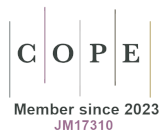Freudian psychoanalysis in the work of Arthur Schnitzler Eyes Wide Shut
DOI:
https://doi.org/10.18778/1427-9665.17.09Keywords:
psychoanalysis, Freud, Eyes Wide Shut, Oczy szeroko zamknięte, Die TraumdeutungAbstract
Interpreting dreams was an important aspect of Sigmund Freud’s life. In his statements and works, he repeated multiple times that a dream is the fulfilment of a wish. Dream analysis had a huge impact on his subsequent research, including psychoanalysis and the theory of the subconscious. Through his work he contributed to people starting to analyze their dreams, and they continue to do so to this day. However, the difficulty in analyzing the dreams was their transience and length. This meant that remembering them was often problematic. Freudian psychoanalysis and the interpretation of dreams were frequent motifs in Artur Schnitzler’s work. One of them is Traumnovelle, or Eyes Wide Shut. The aim of the article is to show how Freudian psychoanalysis is presented in the work of the Austrian writer and why the symbolism of dreams and its meaning are so important in the context of the discussed work.
References
De Berg H. (2004), Teorie Freuda a badania literaturoznawcze i kulturowe wprowadzenie do problematyki. Łask: Oficyna Wydawnicza LEKSEM.
Google Scholar
Dietl C. (2012), Tanz. W: Metzler Lexikon literarischer Symbole, s. 438–440. J.B. Metzler.
Google Scholar
Fischer Ch. (1978), Der Traum in der Psychotherapie. München: Minerva Publikation.
Google Scholar
Freud S. (2010), Die Traumdeutung. Frankfurt a. M.: Fischer Taschenbuch Verlag.
Google Scholar
Freud S. (2015), Objaśnianie marzeń sennych. Warszawa: Wydawnictwo KR.
Google Scholar
Freund W., Freund-Spork W. (2006), Arthur Schnitzler Traumnovelle. Lektüreschlüssel. Stuttgart: Reclam.
Google Scholar
Frey Ch. (2012), Traum. W: Metzler Lexikon literarischer Symbole, s. 451–452. J.B. Metzler.
Google Scholar
Gay P. (2012), Das Zeitalter des Doktor Arthur Schnitzler, Frankfurt a. M.: Fischer Taschenbuch Verlag.
Google Scholar
Gilardoni-Büch B. (2012), Nacht/Finsternis. W: Metzler Lexikon literarischer Symbole, s. 288–290. J.B. Metzler.
Google Scholar
DOI: https://doi.org/10.1007/978-3-476-05302-2_14
Kächele H. (1999), Was träumte Freud? Ulm: Universitätsverlag Ulm.
Google Scholar
Lengiewicz A. (2012), Nachtigall. W: Metzler Lexikon literarischer Symbole, s. 290–291. J.B. Metzler.
Google Scholar
Neumann B. (2012), Maske. W: Metzler Lexikon literarischer Symbole, s. 266. J.B. Metzler.
Google Scholar
Nitzschke, B. (2011), Die Psychoanalyse Sigmund Freuds. Konzepte und Begriffe. Wiesbaden: VS Verlag.
Google Scholar
DOI: https://doi.org/10.1007/978-3-531-92578-3
Otte H. (1877), Archäologisches Wörterbuch. Leipzig: Reprint-Verlag-Leipzig.
Google Scholar
Reik T. (1993), Arthur Schnitzler als Psycholog. Frankfurt a. M.: Fischer Taschenbuch Verlag.
Google Scholar
Scheffel M. (2014), Traumnovelle. W: Schnitzler Handbuch Leben – Werk – Wirkung, Weimar, s. 228–232. J.B. Metzler.
Google Scholar
Schnitzler A. (2013), Traumnovelle. Stuttgart: Reclam.
Google Scholar
Downloads
Published
Versions
- 2023-12-31 (2)
- 2023-12-31 (1)
How to Cite
Issue
Section
License

This work is licensed under a Creative Commons Attribution-NonCommercial-NoDerivatives 4.0 International License.










